Cellulite Reduction through Diet and Nutrition
Cellulite Reduction Diet and Nutrition. Cellulite, a common skin condition that creates a dimpled, lumpy appearance on the thighs, buttocks, and other areas, is a concern for many. While various factors contribute to cellulite formation, including genetics and lifestyle choices, diet and nutrition play a pivotal role in managing and reducing its appearance.
This blog explores effective dietary strategies for cellulite reduction, emphasizing the importance of specific foods, hydration, balanced meal planning, supplements, and the role of antioxidants. We will also discuss how a personal trainer can play an important role and introduce you to some effective professional body contouring treatments for cellulite reduction.
Why Is a Health Diet & Good Nutrition Important for Cellulite Reduction?
A healthy diet and good nutrition are fundamental for cellulite reduction for several reasons. These dietary practices directly impact the body’s overall health, skin condition, and fat accumulation. Therefore, influencing the appearance of cellulite. Here’s why focusing on a nutritious diet is crucial for combating cellulite:
-
Fat Reduction and Improved Body Composition
A diet rich in nutritious, whole foods can help manage weight and reduce excess body fat. Lower body fat percentages can diminish the visibility of cellulite. As there’s less fat pressing against the connective tissues beneath the skin. Balanced diets promote a healthy metabolism, aiding in the reduction of fat deposits that contribute to cellulite formation.
-
Enhanced Skin Health and Elasticity
Good nutrition provides the essential vitamins, minerals, and antioxidants necessary for healthy skin. Nutrients like vitamin C, vitamin E, zinc, and selenium are vital for collagen and elastin production, proteins that give the skin its firmness and elasticity. A diet lacking in these nutrients can lead to weaker connective tissue, making cellulite more apparent.
-
Toxin Elimination
A healthy diet, especially one high in fiber, aids in digestion and helps the body eliminate toxins efficiently. Excessive toxin buildup can contribute to fat accumulation and poor skin health. This will exacerbate cellulite’s appearance. Foods rich in antioxidants play a role in detoxifying the body. in turn, supporting the health of the skin, and reducing inflammation.
-
Hydration
Hydration is a key aspect of good nutrition, and consuming enough fluids is critical for cellulite reduction. Water intake helps maintain skin elasticity and flush out toxins that can contribute to cellulite. Moreover, a well-hydrated body can more effectively metabolize fat, aiding in cellulite diminishment.
-
Blood Flow and Circulation
A diet rich in healthy fats (like omega-3 fatty acids found in fish, flaxseeds, and walnuts) and antioxidants can improve blood flow and circulation. Enhanced circulation ensures that nutrients and oxygen are efficiently delivered to skin cells. reducing the likelihood of fat cell accumulation and supporting skin repair and renewal processes.
-
Hormonal Balance
What we eat affects our hormone levels, and hormonal imbalances are linked to cellulite formation. Diets high in processed foods and sugar can spike insulin levels. Leading to increased fat storage. In contrast, a balanced diet helps maintain stable blood sugar and hormone levels, reducing the risk of developing cellulite.
Summary
In essence, a healthy diet and good nutrition are not just about reducing calorie intake or avoiding certain food groups. It’s about nourishing the body with the right nutrients that support skin health, improve body composition, enhance detoxification processes, and maintain hormonal balance. By adopting a holistic approach to eating, focusing on nutrient-rich foods, and staying hydrated. Individuals can significantly impact the appearance of cellulite, leading to smoother, firmer skin.
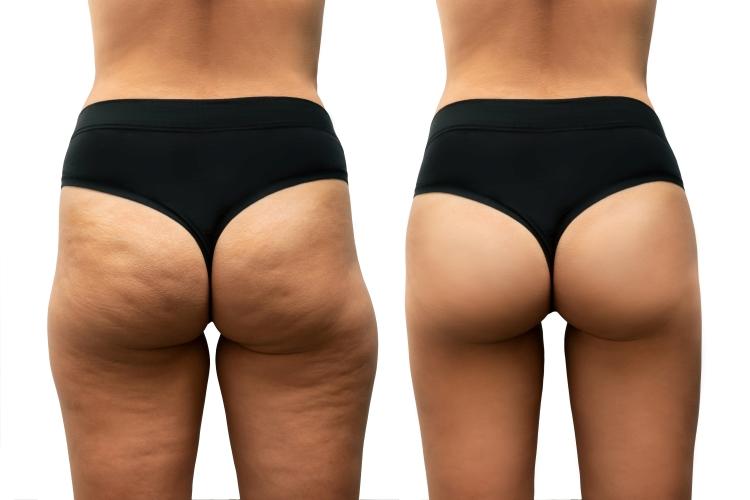
Foods to Avoid and Include in Your Diet for Cellulite Reduction
Foods to Avoid
- Refined and Processed Foods: High in additives and low in nutrients, these can lead to toxin buildup and fat accumulation.
- Sugary Snacks and Beverages: Excess sugar can lead to fat storage, worsening cellulite.
- Salty Foods: High sodium intake can cause fluid retention, making cellulite more visible.
- Fatty Meats: Saturated fats can contribute to the buildup of fat cells and cellulite.
Foods to Include
- Fruits and Vegetables: Rich in antioxidants, they help flush out toxins and improve skin health.
- Lean Proteins: Sources like chicken, fish, and legumes promote muscle tone, reducing the appearance of cellulite.
- Whole Grains: Fiber-rich foods improve digestion and metabolism, aiding in fat loss.
- Healthy Fats: Avocados, nuts, and olive oil contain essential fatty acids that boost skin health and elasticity.
Importance of Hydration and Its Impact on Cellulite Appearance
Hydration is crucial for cellulite reduction. Drinking adequate water helps maintain skin elasticity, flush out toxins, and reduce bloating, which can make cellulite less noticeable. Aim for at least 8-10 glasses of water daily. Additonaly, incorporating hydrating foods like cucumbers, watermelon, and berries into your diet will help.
Creating a Balanced Meal Plan for Promoting Healthy Skin and Reducing Cellulite
A balanced meal plan for cellulite reduction should include a variety of nutrient-rich foods that promote healthy skin and minimize fat accumulation. Here are some tips:
- Incorporate a mix of fruits, vegetables, lean proteins, and whole grains in your meals.
- Plan meals that are rich in antioxidants and healthy fats to improve skin texture and elasticity.
- Limit the intake of sugars, salts, and unhealthy fats.
- Ensure each meal is balanced, with a good portion of proteins, fibers, and healthy fats.
Should I Combine Diet and Nutrition with Exercise for Cellulite Reduction?
Absolutely, combining diet and nutrition with exercise is one of the most effective strategies for cellulite reduction. This holistic approach addresses the root causes of cellulite from multiple angles, enhancing your overall health and the appearance of your skin. Here’s why integrating diet, nutrition, and exercise is beneficial for cellulite reduction:
-
Enhanced Fat Loss
- Diet and Nutrition: A balanced diet helps create a caloric deficit, essential for fat loss. Eating foods high in nutrients and low in processed sugars and unhealthy fats can reduce the fat deposits that contribute to the appearance of cellulite.
- Exercise: Regular physical activity, especially a combination of cardiovascular and strength training exercises, increases the number of calories you burn. This not only aids in fat loss but also improves muscle tone underneath the skin, making cellulite less visible.
-
Improved Skin Elasticity
- Nutrition: Foods rich in vitamins C and E, omega-3 fatty acids, and antioxidants can boost collagen production. A key factor in maintaining skin elasticity and firmness. A diet with adequate protein also supports the repair and growth of skin tissues.
- Exercise: Regular exercise improves blood circulation, delivering more oxygen and nutrients to the skin. This can enhance the health and elasticity of the skin, further reducing the appearance of cellulite.
- Detoxification and Metabolism Boost
- Diet: Consuming plenty of fluids and foods high in fibre aids in the body’s natural detoxification processes. Helping to eliminate toxins that can contribute to fat accumulation and cellulite.
- Exercise: Physical activity helps stimulate lymphatic drainage and increases sweat production. Both of which play roles in detoxifying the body.
-
Hormonal Balance
- Nutrition: A diet that stabilizes blood sugar levels and provides all essential nutrients can help maintain hormonal balance. Avoiding excessive sugar and processed foods is crucial since hormonal imbalances can lead to increased fat storage and cellulite formation.
- Exercise: Regular exercise can regulate hormones that influence fat storage. Such as cortisol, insulin, and estrogen, further aiding in cellulite reduction.
-
Stress Reduction
- Diet: Foods rich in magnesium and vitamin B can help manage stress levels. High stress can lead to cortisol spikes, encouraging the body to store fat, particularly in areas prone to cellulite.
- Exercise: Physical activity is a proven stress reliever. Reducing stress through exercise can prevent cortisol-related fat accumulation.
Summary
Integrating a nutritious diet with a consistent exercise regimen is key to effectively reducing cellulite. This combination not only targets the aesthetic concerns associated with cellulite but also promotes overall physical health, energy levels, and mental well-being. Remember, while immediate results might not be visible, consistency over time will lead to noticeable improvements in skin texture and reduction in cellulite. For personalized advice and optimal results, consider consulting with nutrition and fitness professionals
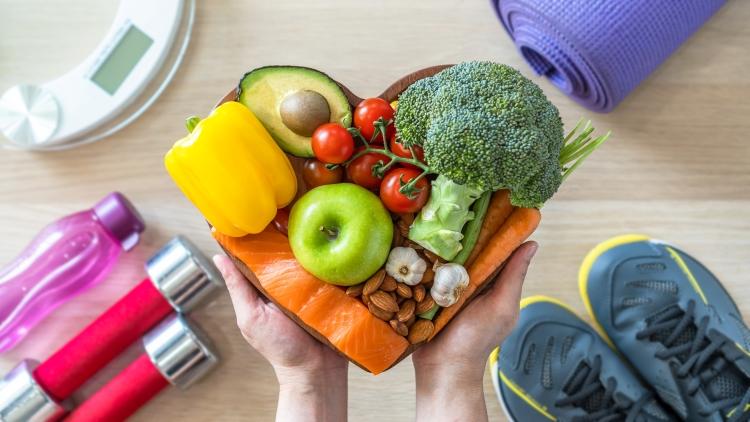
Can a Personal Trainer Help with Diet, Nutrition and Exercise for Cellulite Reduction?
Yes, a personal trainer can significantly assist with diet and nutrition advice alongside exercise planning for cellulite reduction, within the scope of their qualifications. Personal trainers are primarily fitness experts, but many also have a foundation in nutrition to complement their exercise programs. Here’s how they can help:
-
Customized Exercise Plans
- Targeted Workouts: Personal trainers can design exercise programs that focus on reducing body fat and improving muscle tone in areas prone to cellulite, such as the thighs, buttocks, and abdomen. These might include a combination of cardiovascular exercises to burn fat and strength training to build muscle, which can make the skin appear smoother and more toned.
- Consistency and Progression: They can monitor your progress and adjust the workout intensity or variety as needed, ensuring you continue to challenge your body and make progress towards your goals.
-
Basic Nutrition Guidance
- Healthy Eating Tips: While not dietitians, personal trainers can offer basic nutrition advice to support your cellulite reduction efforts. This might include recommendations on hydrating properly, choosing whole foods over processed options, and maintaining a balanced intake of nutrients that promote skin health and fat loss.
- Meal Suggestions: They might provide general advice on meal timing and composition (such as balancing proteins, fats, and carbohydrates) that complements your fitness routine and supports overall well-being.
-
Accountability and Motivation
- Regular Check-ins: Having regular sessions with a personal trainer helps keep you accountable to your fitness and nutrition goals. They can motivate you to stick with your program and make healthier lifestyle choices.
- Support System: Personal trainers often offer encouragement and can be a source of support when you’re feeling demotivated or facing challenges in your journey.
-
Holistic Approach to Wellness
- Lifestyle Advice: Beyond diet and exercise, personal trainers can provide tips on managing stress and improving sleep quality—both of which can influence cellulite appearance and overall health.
- Referrals: If your nutritional needs are complex or you’re looking for detailed dietary planning, a responsible personal trainer can refer you to a registered dietitian or nutritionist for more specialized advice.

How To Choose A Personal Trainer For Diet, Nutrition, and Exercise Planning For Cellulite Reduction
Choosing a personal trainer to help with diet, nutrition, and exercise specifically for cellulite reduction involves several considerations to ensure they’re the right fit for your goals and needs. Here’s a guide to selecting a personal trainer who can effectively support you in your journey:
-
Check Credentials and Specializations
- Certification: Ensure the trainer is certified through a reputable organization (e.g., NASM, ACE, ACSM). These certifications indicate they have met industry standards for fitness professionals.
- Nutrition Qualifications: While personal trainers aren’t nutritionists, some may have additional certifications in nutrition that qualify them to offer basic dietary advice. Look for certifications such as Precision Nutrition, which is widely recognized.
- Specialization in Body Composition: Trainers who specialize in body composition, weight loss, or specific fitness goals related to cellulite reduction will be more adept at designing programs that address these areas.
-
Experience and Success Stories
- Relevant Experience: Ask about their experience working with clients who have similar goals, particularly in cellulite reduction and body toning.
- Client Testimonials: Look for testimonials or before-and-after pictures of clients they’ve worked with, focusing on those with goals similar to yours. Success stories can give you insight into their effectiveness.
-
Approach to Diet and Exercise
- Holistic Approach: A good personal trainer understands the importance of integrating exercise with diet and lifestyle changes for cellulite reduction. Discuss their approach to see if it aligns with your preferences and goals.
- Customized Plans: Ensure they offer customized meal planning and exercise regimens rather than a one-size-fits-all approach. Personalization is key to addressing your specific needs and challenges.
-
Communication and Compatibility
- Communication Style: Choose a trainer whose communication style matches yours. You should feel comfortable asking questions and expressing concerns.
- Personality Fit: You’ll be spending a lot of time with your trainer, so it’s important that their personality and motivational style work for you.
-
Availability and Location
- Schedule Compatibility: Make sure the trainer’s availability aligns with your schedule. Consistency is crucial for success.
- Location: Consider whether you prefer in-person sessions at a gym, home visits, or online coaching. The right setup will help you stay committed to your program.
-
Cost and Commitment
- Pricing: Understand their fee structure and what’s included in their services. Ensure it fits within your budget.
- Contract Terms: Some trainers may require a commitment for a certain number of sessions. Make sure you’re comfortable with the terms before signing up.
-
Initial Consultation
- Assessment: A good personal trainer should offer an initial consultation to assess your fitness level, discuss your goals, and explain how they can help you achieve them. Use this opportunity to gauge your comfort level with their expertise and approach.
-
Referrals and References
- Ask for References: Don’t hesitate to ask for references from current or past clients. Speaking with them can provide valuable insights into their experiences and the trainer’s effectiveness.
Choosing the right personal trainer involves assessing their qualifications, experience, and approach to ensure they can effectively guide you in diet, nutrition, and exercise for cellulite reduction. The right trainer not only helps you achieve your physical goals but also supports your overall well-being throughout the journey.
While a personal trainer’s primary focus is on physical exercise, many are equipped to provide general nutrition and lifestyle advice that can aid in cellulite reduction. Their guidance can help you adopt a holistic approach to fitness and wellness, encompassing both diet and exercise. However, for personalized nutrition plans or to address specific dietary needs, consulting with a certified nutritionist or dietitian is recommended. Combining professional fitness and nutritional guidance with commitment and consistency is a powerful strategy for reducing cellulite and improving overall health.

Supplementing with Collagen and Other Nutrients for Improving Skin Elasticity
Collagen supplements can be beneficial for improving skin elasticity and reducing cellulite. Collagen, a primary protein in the skin, helps keep it firm and smooth. Vitamin C, zinc, and copper also support collagen production. Consider incorporating supplements or collagen-rich foods like bone broth, citrus fruits, and leafy greens into your diet.
Role of Antioxidants in Fighting Cellulite
Antioxidants play a critical role in combating cellulite by neutralizing free radicals, reducing inflammation, and supporting skin health. Foods rich in antioxidants, such as berries, green tea, dark chocolate, and nuts, can help improve circulation, reduce fat accumulation, and enhance skin texture, contributing to the reduction of cellulite appearance
Cellulite Reduction – Professional Body Contouring Treatment Options
Professional body contouring treatments for cellulite reduction have become increasingly popular for those seeking to diminish the appearance of cellulite and enhance their body’s contour. These treatments offer non-invasive to minimally invasive options, targeting the structural causes of cellulite beneath the skin. Here’s an overview of some of the most effective professional body contouring treatments for cellulite reduction:
-
Radiofrequency (RF) Therapy
RF therapy utilizes electromagnetic waves to heat the dermis and underlying tissues, stimulating collagen and elastin production. This increased production can tighten the skin and reduce the appearance of cellulite.
-
Cryolipolysis (Fat Freezing)
cryolipolysis targets and cools fat cells until they crystallize and are naturally eliminated by the body. While primarily used for fat reduction, it can also improve the appearance of cellulite by reducing the fat layers beneath the skin.
- Ultrasonic Cavitation
Ultrasonic cavitation is a non-invasive body contouring treatment designed to reduce fat deposits and improve the appearance of cellulite. It uses low-frequency sound waves to create micro-bubbles within the fat cells, which causes them to vibrate and break down into liquid form. This process is known as cavitation. The liquefied fat is then eliminated from the body through the lymphatic and urinary systems, resulting in a reduction of fat in the treated area.
4 Shockwave Therapy
Shockwave Therapy uses sound waves to improve blood circulation and collagen production, leading to smoother skin. It’s a non-invasive treatment that can effectively reduce the appearance of cellulite by breaking down the fibrous tissue bands and promoting skin elasticity.
Choosing the Right Body Contouring Treatment
When considering professional body contouring treatments for cellulite reduction, it’s essential to consult with a qualified dermatologist or cosmetic surgeon. They can recommend the most suitable option based on your specific condition, desired outcomes, and overall health. Factors to consider include the severity of cellulite, treatment costs, recovery time, and potential side effects. With advances in technology, many individuals can see significant improvements, leading to enhanced confidence and satisfaction with their body’s appearance.
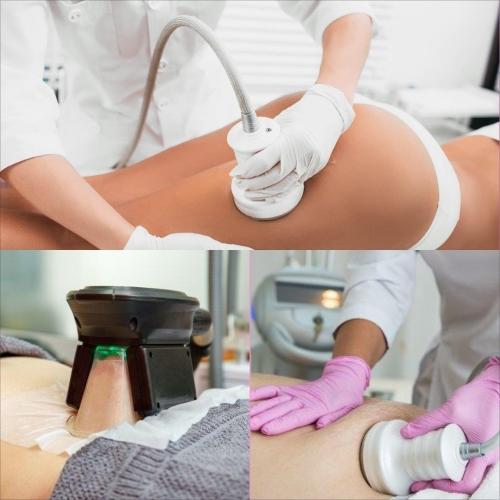
Cellulite Reduction through Diet and Nutrition FAQ
Q1: Can diet and nutrition alone eliminate cellulite?
A1: While diet and nutrition play a crucial role in reducing the appearance of cellulite by improving skin health and reducing fat accumulation, they may not completely eliminate it. Combining a healthy diet with regular exercise, proper hydration, and professional body contouring treatments can offer more comprehensive results.
Q2: What foods should I avoid to reduce cellulite?
A2: To help reduce cellulite, it’s advisable to avoid foods high in sugar and fat, processed foods, salty snacks, and excessive caffeine and alcohol. These can contribute to toxin buildup, fat accumulation, and fluid retention, exacerbating cellulite appearance.
Q3: Are there specific foods that can help reduce cellulite?
A3: Yes, foods rich in antioxidants, vitamins, minerals, and hydration can support cellulite reduction. Focus on fruits and vegetables, lean proteins, whole grains, and plenty of water. Foods high in vitamin C, zinc, and omega-3 fatty acids are particularly beneficial for improving skin elasticity and reducing inflammation.
Q4: How does hydration affect cellulite?
A4: Adequate hydration is essential for maintaining skin elasticity and promoting detoxification, which can help minimize the appearance of cellulite. Drinking enough water helps flush out toxins from the body and keeps the skin hydrated and firm.
Q5: Can losing weight reduce cellulite?
A5: Weight loss may help reduce the appearance of cellulite in some individuals by decreasing the amount of fat beneath the skin. However, cellulite is also influenced by factors like genetics, skin structure, and hormonal imbalances, meaning weight loss might not affect cellulite for everyone.
Q6: How important is fiber in a cellulite-reducing diet?
A6: Fiber is very important as it aids in digestion and helps regulate blood sugar levels, which can prevent fat accumulation. A high-fiber diet also supports the body’s natural detoxification processes, potentially reducing cellulite appearance.
Q7: Can supplements help in reducing cellulite?
A7: Certain supplements may support cellulite reduction efforts by improving skin health and elasticity. These include collagen, vitamin C, omega-3 fatty acids, and antioxidants. However, supplements should complement, not replace, a nutritious diet.
Q8: Is it possible to target cellulite reduction in specific areas of the body through diet?
A8: Diet and nutrition impact the entire body and cannot target cellulite reduction in specific areas alone. However, a healthy diet combined with targeted exercise can help improve muscle tone and reduce fat in areas prone to cellulite.
Q9: How quickly can I see results from dietary changes?
A9: The time frame for seeing results from dietary changes varies for each individual and depends on various factors, including the extent of cellulite, overall diet and lifestyle changes, and consistency. Some may notice improvements in a few months, while for others, it may take longer.
Q10: Can a vegan or vegetarian diet affect cellulite?
A10: A vegan or vegetarian diet, if well-planned and balanced, can provide the necessary nutrients for skin health and fat reduction. The high intake of fruits, vegetables, and plant-based proteins can support cellulite reduction efforts, provided the diet includes adequate vitamins, minerals, and hydration.
As mentioned previously, exercise can significantly enhance the effects of diet and nutrition for cellulite reduction
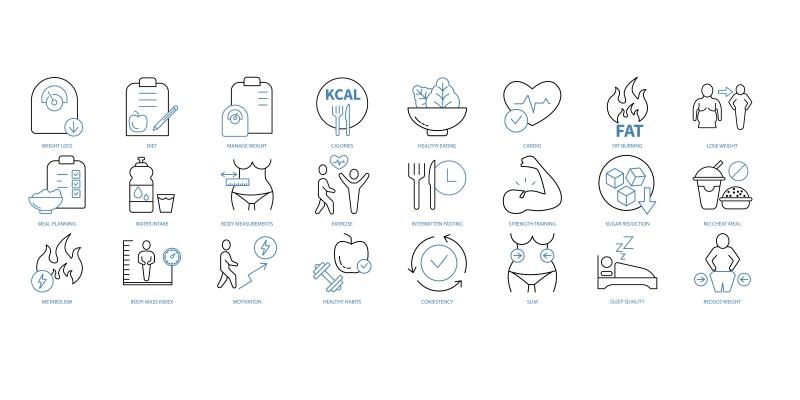
Conclusion
Cellulite reduction can be effectively supported through careful dietary choices and nutritional practices. By avoiding certain foods and including others that promote healthy skin and reduce fat accumulation, staying hydrated, planning balanced meals, supplementing wisely, and focusing on antioxidant intake, you can significantly improve the appearance of cellulite. Remember, consistency is key, and these dietary adjustments should complement other lifestyle changes and treatments for optimal results.
Getting the Best Celluite Reduction Results
To achieve the most impactful results in cellulite reduction, incorporating professional body contouring treatments along with the guidance of a personal trainer is highly recommended. While making mindful dietary choices, staying hydrated, and focusing on nutrients that enhance skin health are foundational steps, these efforts can be greatly amplified with targeted professional interventions.
Body contouring treatments, such as RF therapy, cryolipolysis, or ultrasound cavitation, offer advanced solutions to tackle cellulite at its source, providing noticeable improvements in skin texture and firmness.
Similarly, a personal trainer can tailor an exercise regimen that complements your dietary efforts, ensuring a well-rounded approach to cellulite reduction. This combination of professional treatments and personalized fitness guidance, alongside diligent nutritional practices, sets the stage for superior results.
Embrace this comprehensive strategy to effectively diminish cellulite and unveil smoother, more toned skin.

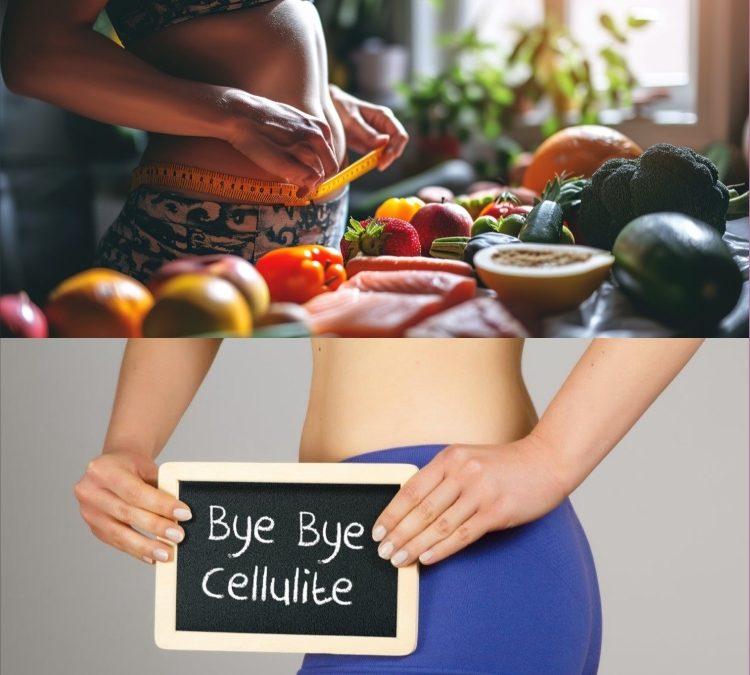
Recent Comments